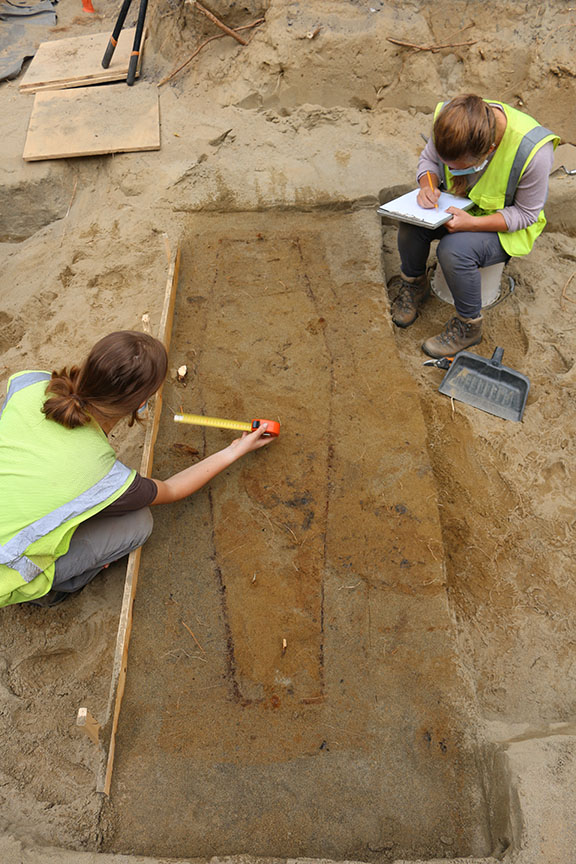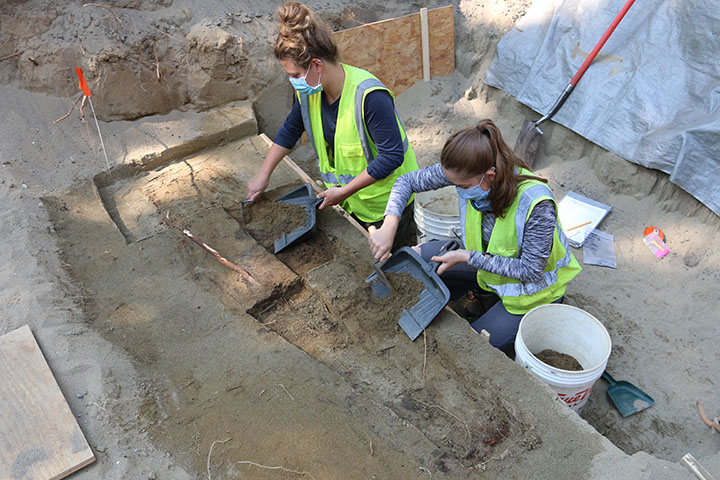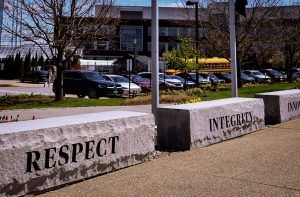Seven skeletons found under Burlington home
October 6, 2020
As construction workers began to excavate the ground in a Burlington backyard, as part of a simple foundation project, instead of finding more dirt, they found bones.
Homeowners in Burlington decided to undertake an extensive home makeover only to discover they’re not the only ones inhabiting the area. The construction workers on the scene initially called the police in, thinking they’d stumbled upon a crime scene.
 But after a medical examiner took a look at the scene, what the workers had found was not a crime scene, but a burial site. That prompted a call to State Archaeologist and UVM lecturer Jess Robinson as well as the UVM Consulting Archaeology Program (CAP).
But after a medical examiner took a look at the scene, what the workers had found was not a crime scene, but a burial site. That prompted a call to State Archaeologist and UVM lecturer Jess Robinson as well as the UVM Consulting Archaeology Program (CAP).
The team found 17 grave shafts, seven containing outlines of coffins with skeletons inside and 10 mysteriously empty grave shafts.
The team of students and instructors, led by John G. Crock, the Director of UVM’s Archaeology program, was called on to analyze seven sets of skeletons they later found out were most likely soldiers from the War of 1812.
“We do feel for the landowner,” Crock said of the discovery. “They’re very interested and supportive but of course it was certainly a shock.”
His team of students and faculty were able to finish excavation on Sept. 29 and are now in the process of analyzing the remains further and eventually finding a home for them to memorialize some of the country’s first veterans.
“There’s a collaboration between the City and the State to try to establish a memorial for these War of 1812 soldiers,” Crock said.
The State recently invested in an above-ground mausoleum where the remains, along with previous remains from the Burlington area, will go and if more research needs to be done they will be easily accessible, said Laura Trieschmann, Vermont’s State Historic Preservation Officer.
“We want to make sure that Vermont and our nation’s history is understood and celebrated and that anything that relates to that history such as buildings or archaeological sites are treated as they should and
preserved as needed,” she said.
Burlington is home to many grave sites, similar to this one, as it had a large army base during the War of 1812 which is now memorialized by Battery Park.

As many as four thousand soldiers were based in Burlington at that time and many people died from battle wounds, hospital treatments and most commonly from deadly epidemics like pneumonia.
At that time, the military wasn’t recording where they were burying people and there was no map drawn so people soon forgot and started to build Burlington on top of these cemeteries.
However, the military hospital left detailed records of all of the deceased so there were about 550 remains from people who died at the hospital.
“I think there are a lot more [archaeological sites] we just don’t know exactly where they are and there’s really no large financial support to undertake an investigation that would find them all and exume them all,” Crock said.
The new mausoleum is anticipated to take around a year and is set to be completed by Memorial Day of 2021, according to Trieschmann.
UVM CAP will continue to do research on and analyze these human remains further to try to identify age, sex, stature and obvious trauma or pathology.
Archaeologists and historians will then wait for the next home renovation to reveal another set of lost soldiers to tell us more about the history.






